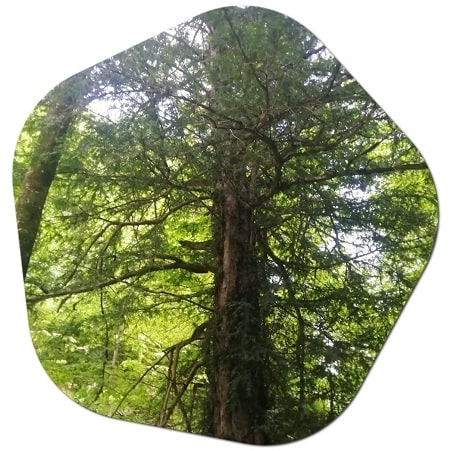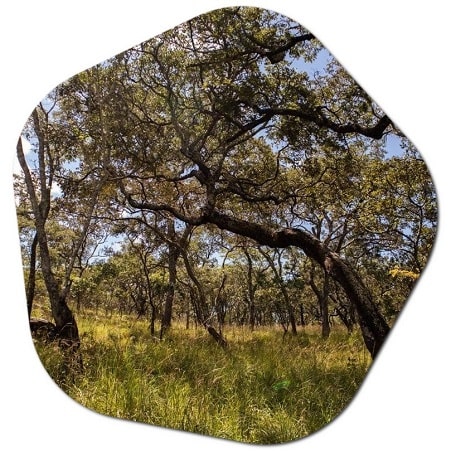Is there a forest in Zambia?
How much forest is there in Zambia? Which trees are common in forest areas in Zambia? What is the largest forest in Zambia? Which trees are unique to Zambia? WE WILL TAKE A BRIEF LOOK AT THE FORESTS OF ZAMBIA.
Of course there are forests in Zambia. Zambia has significant forested areas. The country is known for its diverse forest ecosystems, which play a crucial role in supporting biodiversity, providing ecosystem services, and contributing to the livelihoods of local communities. Information on important tree and plant species growing in Zambia:
- Miombo Woodlands: The miombo woodlands are the dominant forest type in Zambia, covering a large portion of the country. Miombo woodlands are characterized by a mix of deciduous trees, predominantly from the Brachystegia genus, along with other tree species like Julbernardia, Isoberlinia, and Uapaca. These woodlands are adapted to the seasonal climate of Zambia and have important ecological and economic value.
- Evergreen Forests: Found in areas with higher rainfall and along watercourses, evergreen forests are characterized by a dense canopy of tall trees that retain their leaves throughout the year. These forests support a variety of tree species, including species of Syzygium, Newtonia, and Albizia.
- Riparian Forests: Riparian forests are found along riverbanks and wetland areas, providing a unique habitat for diverse plant and animal species. Trees such as the Zambezi teak (Baikiaea plurijuga), Faidherbia albida, and various Acacia species are common in riparian forest ecosystems.
- Upstream Waterfall Forests: These forests are located in areas near waterfalls and mist zones, where abundant moisture supports unique vegetation. They are characterized by species such as Podocarpus, Macaranga, and many ferns, mosses, and epiphytic plants.
These forest ecosystems in Zambia contribute to the conservation of wildlife, water catchment, carbon sequestration, and the provision of various forest products such as timber, non-timber forest products, and fuelwood. They also offer opportunities for ecotourism and recreational activities.

It’s important to note that Zambia, like many other countries, faces challenges related to deforestation, illegal logging, and land degradation. Efforts are being made to promote sustainable forest management, conservation, and restoration to preserve Zambia’s forests for future generations.
What is the main forest in Zambia?
The main forest type in Zambia is the miombo woodland. The miombo woodlands cover a significant portion of the country and are considered the dominant forest ecosystem. These woodlands are characterized by a mix of deciduous tree species, with the Brachystegia genus being the most common and prominent. Other tree species found in miombo woodlands include Julbernardia, Isoberlinia, Uapaca, and many others.

Miombo woodlands are well-adapted to the seasonal climate of Zambia, with a distinct wet and dry season. The trees in the miombo woodlands shed their leaves during the dry season to conserve water, and new leaves emerge with the onset of the rainy season. This adaptation allows the trees to survive in the relatively dry and fire-prone environments of the woodlands.
The miombo woodlands are ecologically important, providing habitat for a diverse range of wildlife, including mammals, birds, reptiles, and insects. They also contribute to water regulation, soil conservation, and carbon sequestration. Additionally, the miombo woodlands have socio-economic significance as a source of timber, non-timber forest products, and fuelwood for local communities.
Due to its dominance and extent, the miombo woodland can be considered the main forest type in Zambia. However, it’s important to note that Zambia also has other forest types, such as evergreen forests, riparian forests, and upstream waterfall forests, which contribute to the overall forest cover and biodiversity of the country.
Why is there deforestation in Zambia?
Deforestation in Zambia can be attributed to a combination of factors, including both direct and indirect drivers. Here are some key reasons behind deforestation in the country:
- Agriculture and Shifting Cultivation: Agriculture is one of the primary drivers of deforestation in Zambia. Small-scale farmers practice shifting cultivation, clearing land through slash-and-burn techniques to create agricultural fields. This practice, when done unsustainably or on a large scale, can lead to significant forest loss.
- Logging and Timber Extraction: Commercial logging for timber production, both legal and illegal, contributes to deforestation in Zambia. High-value tree species, such as the Zambezi teak (Baikiaea plurijuga), are targeted for their timber, leading to forest degradation and loss.
- Charcoal Production: Charcoal production is a significant driver of deforestation in Zambia, particularly in urban areas where there is high demand for cooking fuel. Trees are cut down and burned to produce charcoal, resulting in the loss of forest cover.
- Mining and Infrastructure Development: Mining activities, including large-scale mining and artisanal mining, often result in deforestation as forests are cleared to access mineral resources. Infrastructure development, such as road construction and expansion, can also lead to forest loss and fragmentation.
- Population Growth and Land Pressure: Rapid population growth and increased demand for agricultural land, housing, and infrastructure put pressure on forested areas. As a result, forests are cleared to accommodate expanding human settlements and economic activities.
- Lack of Awareness and Enforcement: Limited awareness about sustainable forest management practices and weak law enforcement contribute to deforestation. Illegal logging and encroachment into protected areas continue due to inadequate monitoring and enforcement measures.
- Climate Change and Fire Incidents: Climate change impacts, such as increased droughts and wildfires, can exacerbate deforestation in Zambia. Forests become more vulnerable to fires, leading to forest degradation and loss.
Forests in Zambia; Efforts are being made by the Zambian government and various organizations to address deforestation through policies, sustainable forest management practices, community-based conservation initiatives, and awareness campaigns. Promoting sustainable land use practices, alternative energy sources, and reforestation programs are important strategies to combat deforestation and preserve Zambia’s forests for future generations.





